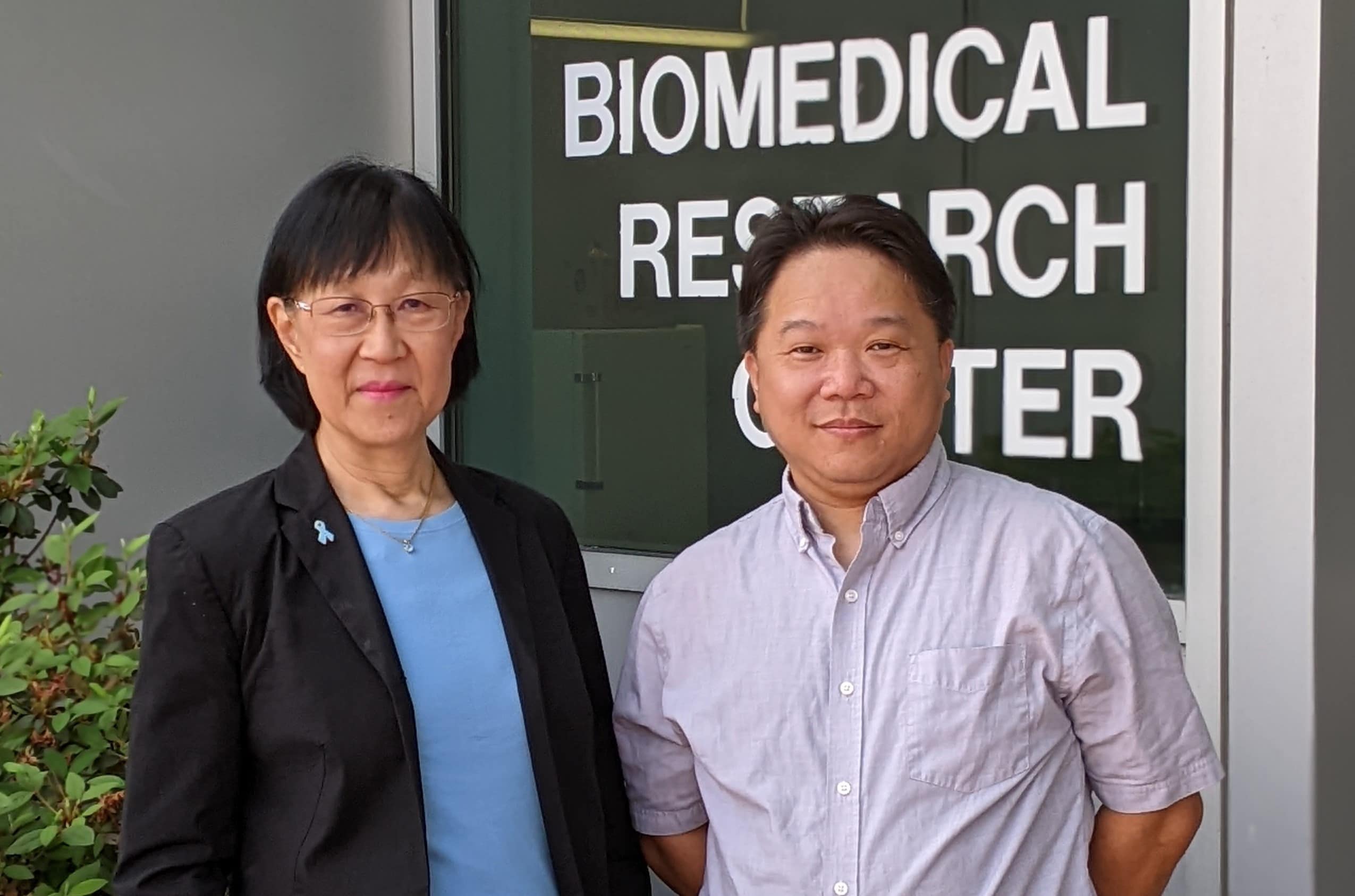UAMS Study First to Test When Common Arsenic Exposures Are Most Likely to Cause Male Infertility in Offspring
| LITTLE ROCK — In the first study of its kind, researchers at the University of Arkansas for Medical Sciences (UAMS) will test when exposure to inorganic arsenic — a common, harmful environmental toxin — is most likely to lead to infertility traits that may last for generations.
The study, supported by a five-year, $2.54 million National Institutes of Health (NIH) grant, is co-led by Shuk-Mei Ho, Ph.D., vice chancellor for Research and Innovation and a professor in the College of Medicine Department of Pharmacology and Toxicology; and Yuet-Kin “Ricky” Leung, Ph.D., an associate professor in the department.
Their interdisciplinary team will use the latest genetic sequencing technology to test the effects of arsenic exposures in mice during early life (from pregnancy to weaning) and adolescence. These high-growth periods are considered “windows of susceptibility” when exposure to even low-doses of inorganic arsenic may cause inheritable poor sperm quality in offspring.
“We’re asking, does it matter when the father is exposed?” Ho said. “Does it matter if the father is exposed while in the womb, or does it matter if the father is exposed during puberty, which is another very sensitive window.”
Overall, one-third of infertility cases are caused by male reproductive issues, one-third by female reproductive issues, and one-third by both male and female reproductive issues or by unknown factors, according to the NIH National Institute of Child Health and Human Development.
Inorganic arsenic ranks No. 1 on the Agency for Toxic Substances and Disease Registry (ATSDR) Substance Priority List, which includes toxins that pose the most significant potential threat to human health based on its frequency, toxicity and potential for exposure.
Ho noted that sperm are vulnerable to environmental toxins and there has been a global decline in male fertility over the last four to five decades. While there are a number of potential environmental causes, research has confirmed that exposure to inorganic arsenic produces significant reproductive toxicity in adult males.
The toxin occurs naturally in the soil and groundwater and is more concentrated in certain geographic areas and in some foods and plant products, such as rice and tobacco leaves.
To help secure the NIH grant, Leung said the research team showed that arsenic affects a key regulator in sperm, called small RNA, which has a critical role in paternal inheritance.
“Our preliminary findings were significant, and our next question is, does this modification resulting from arsenic exposure transfer from father to son,” he said.
Leung said an exciting part of the project is the team’s use of third-generation nanopore sequencing technology, which allows real-time analysis of DNA and RNA segments, including the small RNA. It could lead to groundbreaking new understanding of the mechanisms involved.
“Truly, this technology can help us to locate the modified RNA and determine if the arsenic exposure is responsible,” he said, adding that the research is possible because the College of Medicine Department of Biomedical Informatics has unique expertise in nanopore sequencing. Study co-investigators Piroon Jenjaroenpun, Ph.D., and Thidathip Wongsurawat, Ph.D., now faculty of medicine at Mahidol University in Thailand, were postdoctoral fellows in the department, and they have continued their connection to UAMS as adjunct assistant professors.
Looking ahead, if successful, the project could lead to new RNA-based strategies for decreasing the reproductive toxicity of inorganic arsenic, Ho said. The data could also inform the public and policymakers about needed changes to reduce exposure.
The research team’s other members are:
- Ngai Chung Neville Tam, Ph.D., assistant professor, College of Medicine Department of Pharmacology and Toxicology; co-investigator
- Jun Ying, Ph.D., professor, UAMS Department of Biostatistics; co-investigator
- Noriko Nakamura, Ph.D., reproductive toxicologist, National Center for Toxicological Research (Food and Drug Administration) in Jefferson, Ark.; consultant
This grant is supported by the NIH National Institute of Environmental Health Sciences (NIEHS), grant number R01ES032675.
UAMS is the state’s only health sciences university, with colleges of Medicine, Nursing, Pharmacy, Health Professions and Public Health; a graduate school; a hospital; a main campus in Little Rock; a Northwest Arkansas regional campus in Fayetteville; a statewide network of regional campuses; and eight institutes: the Winthrop P. Rockefeller Cancer Institute, Jackson T. Stephens Spine & Neurosciences Institute, Harvey & Bernice Jones Eye Institute, Psychiatric Research Institute, Donald W. Reynolds Institute on Aging, Translational Research Institute, Institute for Digital Health & Innovation and the Institute for Community Health Innovation. UAMS includes UAMS Health, a statewide health system that encompasses all of UAMS’ clinical enterprise. UAMS is the only adult Level 1 trauma center in the state. UAMS has 3,275 students, 890 medical residents and fellows, and five dental residents. It is the state’s largest public employer with more than 12,000 employees, including 1,200 physicians who provide care to patients at UAMS, its regional campuses, Arkansas Children’s, the VA Medical Center and Baptist Health. Visit www.uams.edu or uamshealth.com. Find us on Facebook, X (formerly Twitter), YouTube or Instagram.###
